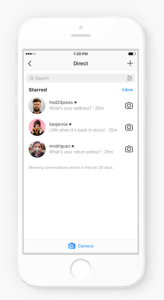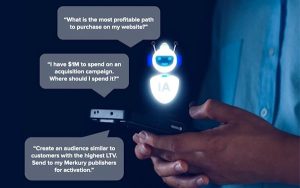
By Amy Neeley, Published October 29, 2014
Halloween is right around the corner! While the sights and sounds of this season might have your imagination running wild with spooky thoughts, real frights like marketing mistakes that cost you customers might be hiding in plain sight. Take a look at some of the marketing mistakes that may be frightening away your leads and customers. If you’re guilty of any of these, we’ve got some tips to help you get your marketing back on track.
Creating and promoting friendly content online is a great way to market your business. But be careful how you respond to negative posts about your business online. Responding to a negative comment like an angry madman is something you never want to do. But some businesses are like Jekyll and Hyde; they post pleasant remarks on their social media pages but then write angry and defensive responses to negative comments on business review sites.
Tip: If you feel yourself morphing into another person after you’ve read an online complaint, that’s your cue to step away and cool down. Once you’ve collected yourself, assess whether the person has a legitimate complaint. Then respond to them in a calm and professional manner and try to rectify the situation. Unfortunately, some of your social media visitors might act like another kind of Halloween monster – a troll. You should never respond to a person who’s harassing or bullying you online. Instead, you can block and report them to the specific social media platform they’re using to harass you.
On the other hand, if you’re slow to respond to negative or positive comments on social media platforms, or even worse, you’ve disappeared altogether, then you might be the ghost of customer service. Sometimes, simply engaging with a fan or follower in a timely fashion can yield pleasant rewards. When it comes to negative interactions, consumer complaints need to be addressed as soon as possible. In fact, one study showed that Twitter users expect brands to respond to complaints within an hour.
Tip: Monitor your social media presence so that you can respond to comments and complaints as they occur. If you receive a complaint and aren’t able to offer a solution right away, at the very least acknowledge the person’s comment or concern. Then let them know when you’ll have an answer. And be sure to follow up with your solution in the time frame you’ve promised! This is not only good customer service, it also demonstrates your professionalism to your entire social media audience, which can drive positive word of mouth.
While no business wants to receive a call from an unhappy customer, it’s bound to happen at some point. But how well do you respond to a customer who calls you to complain about one of your products or services? Do you respond like a witch whipping up a brew of blame and false promises?
Tip: Instead of minimizing a caller’s complaint with excuses, hear them out. Then try to assess the problem and offer a solution on the spot if possible. If an on-the-spot solution isn’t possible, let the caller know you take their problem seriously and that you’ll follow up with them with an appropriate solution. Set the right expectation by giving them a timeline they can expect an answer by. Then be sure to follow up with your solution within that time frame.
When businesses advertise a product or service to customers, they sometimes act like mischievous goblins that use bait and switch tactics to get people to call or visit their websites. Don’t be a goblin, too. Whether offline or online, truthful advertising is not only powerful, it’s the law. You don’t want to be the business that gets a reputation for being shady.
Tip: Building your brand online might take some time, but using sound online marketing methods is still the best way to get customers. Start by ensuring your pay-per-click (PPC) ads match your landing pages; i.e., don’t send consumers to irrelevant “buy now” pages that have nothing to do with your PPC ad. Your website should only contain current offers and promotions so be sure to remove old or expired offers from your site. And, regularly audit your online marketing to make sure your entire web presence is conveying the right message about your business and your brand.
If your online presence lacks life, then you might be a marketing zombie. Here are some signs to look for: you’re slow to revise your dated website or provide search-friendly website copy; you don’t have a mobile-responsive website; you’re dragging behind when it comes to claiming and optimizing your local business listings; your social media pages exist, but aren’t regularly brought to life with engaging content.
Tip: Bring your web presence back to life! Start with a website that’s professional, optimized for conversions, and mobile responsive; take advantage of business listings like Google+ Local, Bing Local, and CitySearch, which can help you be found in search; and if you haven’t done so yet, create your social media accounts on Facebook, LinkedIn, and Twitter. And if you are on social media, make sure all the information on your pages is current and complete, and be sure to feed them with fresh, lively content to engage your fans and followers.
If your marketing has the characteristics of any of these spooky Halloween characters, these tips can help transform your marketing into a more effective way to reach local customers online.
Have you ever made a spooky marketing mistake? Let us know with a comment below!
Business Articles | Business 2 Community
(344)





